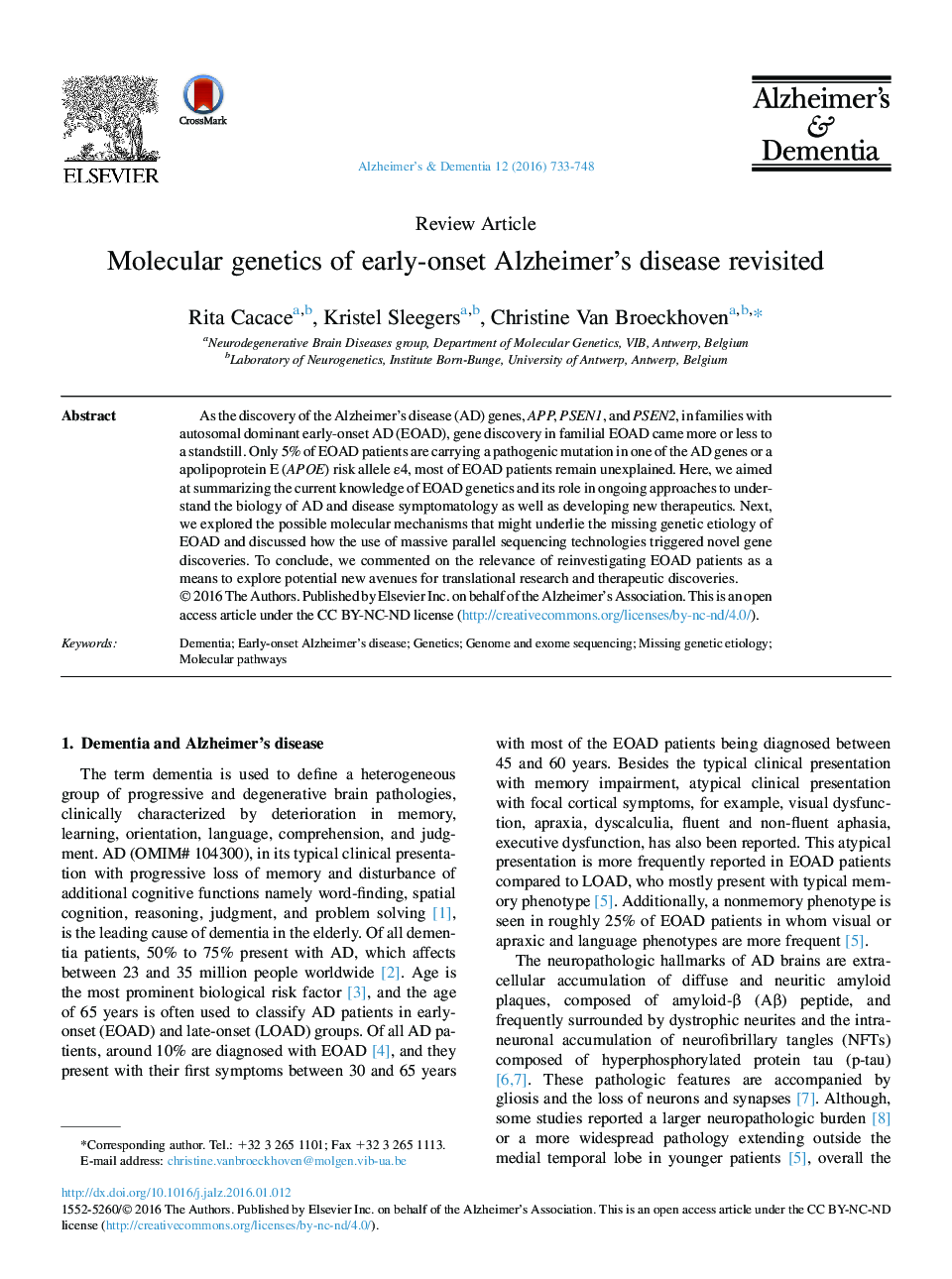| Article ID | Journal | Published Year | Pages | File Type |
|---|---|---|---|---|
| 5623837 | Alzheimer's & Dementia | 2016 | 16 Pages |
As the discovery of the Alzheimer's disease (AD) genes, APP, PSEN1, and PSEN2, in families with autosomal dominant early-onset AD (EOAD), gene discovery in familial EOAD came more or less to a standstill. Only 5% of EOAD patients are carrying a pathogenic mutation in one of the AD genes or a apolipoprotein E (APOE) risk allele ε4, most of EOAD patients remain unexplained. Here, we aimed at summarizing the current knowledge of EOAD genetics and its role in ongoing approaches to understand the biology of AD and disease symptomatology as well as developing new therapeutics. Next, we explored the possible molecular mechanisms that might underlie the missing genetic etiology of EOAD and discussed how the use of massive parallel sequencing technologies triggered novel gene discoveries. To conclude, we commented on the relevance of reinvestigating EOAD patients as a means to explore potential new avenues for translational research and therapeutic discoveries.
